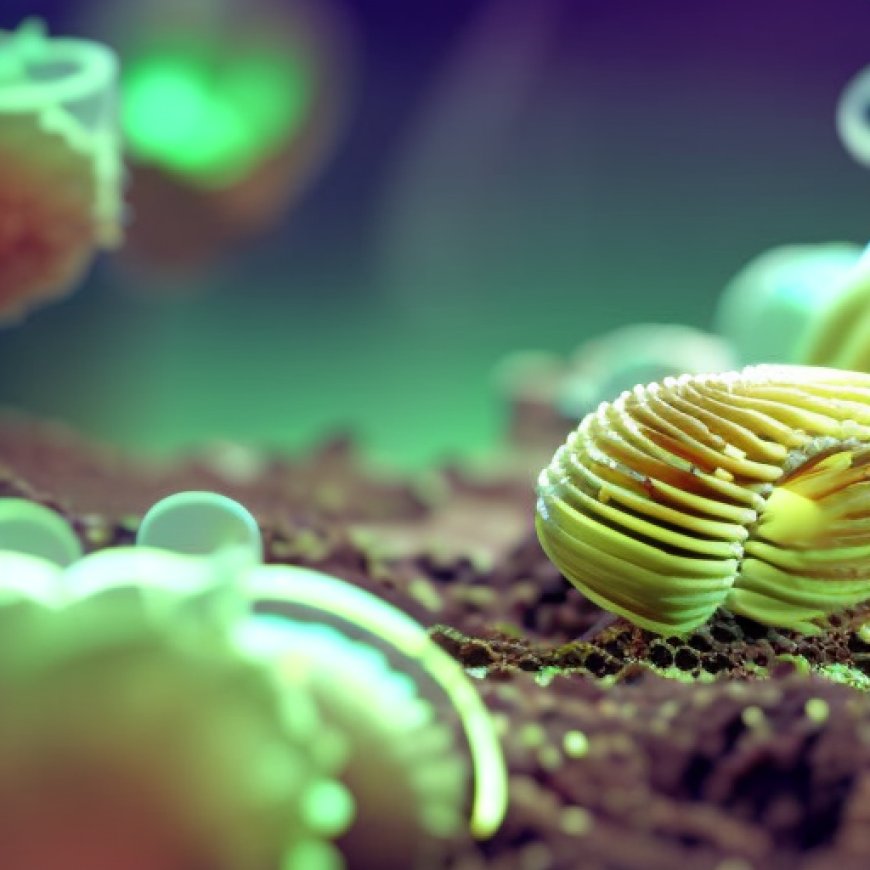Like 3D printer, marine worm form bristles piece by piece: Study
Like 3D printer, marine worm form bristles piece by piece: Study Interesting Engineering


Researchers Study Marine Worms and their Bristles
Introduction
Researchers have utilized advanced imaging techniques to closely examine Platynereis dumerilii, a marine annelid worm. This study aims to understand the formation of bristles, hair-like projections found on each side of the worm. The research provides valuable insights into the biological process and its potential applications in various fields.
The Sustainable Development Goals (SDGs)
- Goal 14: Life Below Water – Understanding marine organisms and their biological processes contributes to the preservation and sustainable use of marine resources.
- Goal 9: Industry, Innovation, and Infrastructure – The research findings may lead to the development of new medical products and naturally degradable materials.
The Complicated Natural Process
Chaetoblasts, specialized cells in the worms, play a crucial role in the formation of bristles. These cells produce chitin, a fibrous material that constructs the bristles. The process involves the gradual development of different sections of the bristles, similar to the layer-by-layer approach of 3D printing. The microvilli on the chaetoblast cells sculpt the bristles with precision, resembling the nozzles of a 3D printer.
This Understanding May Lead to the Creation of Medical Products
The research reveals that within two days, the bristles go from initial formation to full maturity. The shape and length of the bristles can change dramatically as the worm matures, adapting to its environment. The detailed 3D models created through advanced imaging techniques provide unprecedented insights into this biological process. The understanding gained from this study may pave the way for the development of new medical products and naturally degradable materials.
About the Editor
Mrigakshi Dixit is a science journalist with expertise in space exploration, biology, and technological innovations. Her work has been featured in renowned publications such as Nature India, Supercluster, and Astronomy magazine.
SDGs, Targets, and Indicators Analysis:
1. Which SDGs are addressed or connected to the issues highlighted in the article?
- SDG 14: Life Below Water – This goal focuses on the conservation and sustainable use of the oceans, seas, and marine resources. The article discusses the formation of bristles in marine worms, which are part of the marine ecosystem.
- SDG 9: Industry, Innovation, and Infrastructure – This goal aims to promote sustainable industrialization and foster innovation. The article highlights the use of advanced imaging techniques and 3D printing concepts to study the formation of bristles in marine worms.
2. What specific targets under those SDGs can be identified based on the article’s content?
- SDG 14.2: By 2020, sustainably manage and protect marine and coastal ecosystems to avoid significant adverse impacts, including by strengthening their resilience and take action for their restoration, to achieve healthy and productive oceans – The article indirectly addresses this target by providing insights into the biological processes of marine worms, which contribute to the overall health and productivity of marine ecosystems.
- SDG 9.5: Enhance scientific research, upgrade the technological capabilities of industrial sectors in all countries, in particular developing countries, including, by 2030, encouraging innovation and substantially increasing the number of research and development workers per 1 million people and public and private research and development spending – The article demonstrates the use of advanced imaging techniques and highlights the potential for future development of medical products and naturally degradable materials based on the understanding of bristle formation.
3. Are there any indicators mentioned or implied in the article that can be used to measure progress towards the identified targets?
- Indicator for SDG 14.2: Number of research studies or publications on the sustainable management and protection of marine and coastal ecosystems – The article contributes to this indicator by providing new insights into the biological processes of marine worms, which can contribute to the development of strategies for the sustainable management and protection of marine ecosystems.
- Indicator for SDG 9.5: Research and development (R&D) spending – The article indirectly implies the potential for increased R&D spending in the field of marine biology and biotechnology to further explore the applications of bristle formation in medical products and naturally degradable materials.
Table: SDGs, Targets, and Indicators
| SDGs | Targets | Indicators |
|---|---|---|
| SDG 14: Life Below Water | Target 14.2: By 2020, sustainably manage and protect marine and coastal ecosystems to avoid significant adverse impacts, including by strengthening their resilience and take action for their restoration, to achieve healthy and productive oceans | Indicator: Number of research studies or publications on the sustainable management and protection of marine and coastal ecosystems |
| SDG 9: Industry, Innovation, and Infrastructure | Target 9.5: Enhance scientific research, upgrade the technological capabilities of industrial sectors in all countries, in particular developing countries, including, by 2030, encouraging innovation and substantially increasing the number of research and development workers per 1 million people and public and private research and development spending | Indicator: Research and development (R&D) spending |
Copyright: Dive into this article, curated with care by SDG Investors Inc. Our advanced AI technology searches through vast amounts of data to spotlight how we are all moving forward with the Sustainable Development Goals. While we own the rights to this content, we invite you to share it to help spread knowledge and spark action on the SDGs.
Fuente: interestingengineering.com

Join us, as fellow seekers of change, on a transformative journey at https://sdgtalks.ai/welcome, where you can become a member and actively contribute to shaping a brighter future.







